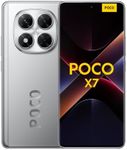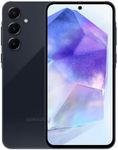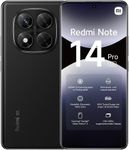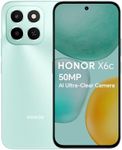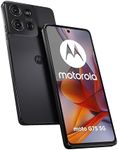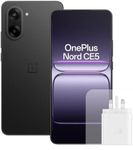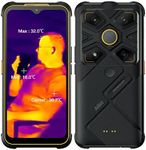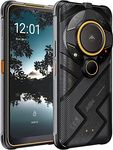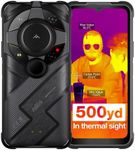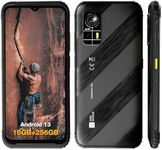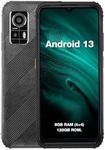Buying Guide for the Best Budget Android Phones
Choosing the right budget Android phone can be a bit overwhelming given the numerous options available. However, by focusing on a few key specifications, you can find a phone that meets your needs without breaking the bank. Here are the main specs to consider and how to navigate them to make the best choice for you.ProcessorThe processor, or CPU, is the brain of your phone. It determines how fast and efficiently your phone can run apps and perform tasks. In budget phones, you will typically find processors from brands like Qualcomm Snapdragon, MediaTek, or Exynos. For light users who mainly use their phone for calls, texts, and social media, a lower-end processor like Snapdragon 400 series or MediaTek Helio A series will suffice. For more demanding tasks like gaming or multitasking, look for mid-range processors like Snapdragon 600 series or MediaTek Helio G series.
RAMRAM (Random Access Memory) is crucial for multitasking and smooth performance. It allows your phone to handle multiple apps at once without slowing down. Budget phones usually come with 2GB to 4GB of RAM. If you are a light user, 2GB might be enough, but for a smoother experience and better multitasking, aim for at least 3GB or 4GB of RAM.
StorageStorage determines how much space you have for apps, photos, videos, and other files. Budget phones typically offer 16GB to 64GB of internal storage. If you store a lot of media or download many apps, opt for at least 32GB or 64GB. Additionally, check if the phone has a microSD card slot for expandable storage, which can be a cost-effective way to increase your storage capacity.
Battery LifeBattery life is essential for ensuring your phone lasts throughout the day. Battery capacity is measured in milliampere-hours (mAh). Budget phones usually have batteries ranging from 3000mAh to 5000mAh. For light users, a 3000mAh battery might be sufficient, but for heavy users or those who are often on the go, a battery of 4000mAh or more is recommended to avoid frequent recharging.
DisplayThe display quality affects your viewing experience. Budget phones typically have HD (720p) or Full HD (1080p) resolution screens. For basic use, an HD display is adequate, but for better clarity and a more enjoyable viewing experience, a Full HD display is preferable. Also, consider the screen size; larger screens (6 inches and above) are better for media consumption, while smaller screens are more compact and easier to handle.
CameraThe camera quality is important if you enjoy taking photos and videos. Budget phones often have single or dual rear cameras with resolutions ranging from 8MP to 16MP. For casual photography, an 8MP or 12MP camera will do, but if you want better photo quality and more features like portrait mode or wide-angle shots, look for phones with higher resolution cameras and additional lenses.
Software and UpdatesThe software experience and update frequency can impact your phone's performance and security. Budget phones may not always receive the latest Android updates promptly. Look for phones that come with the latest Android version out of the box and check the manufacturer's track record for providing updates. A phone with a clean, near-stock Android experience can also offer better performance and less bloatware.

